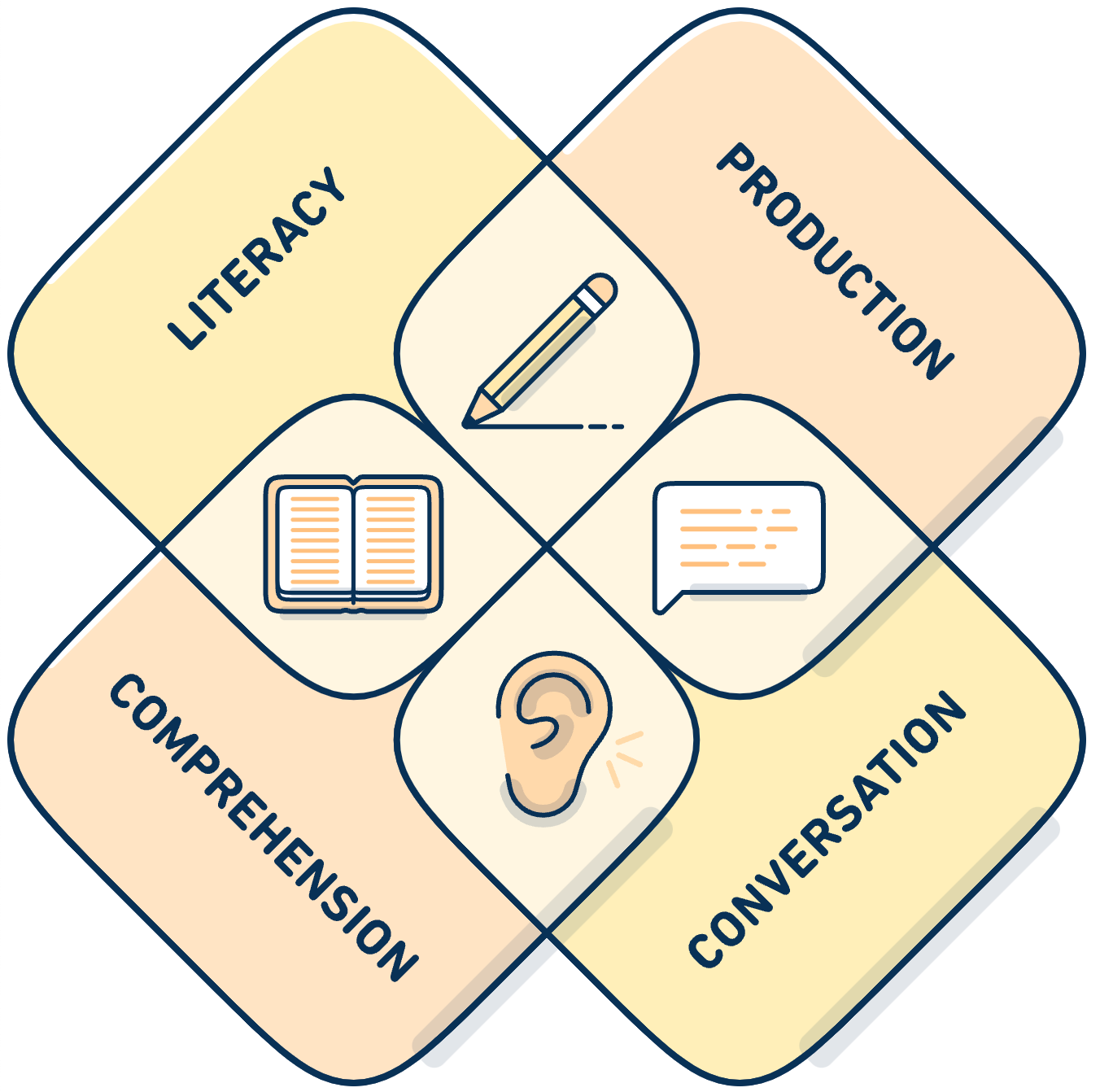In addition to Integrated Subscores for Literacy, Comprehension, Conversation, and Production, the DET now reports Individual Subscores for Speaking, Writing, Reading, and Listening. What are all these subscores, and what can they tell you about your proficiency? We’re so glad you asked!
What are Integrated Subscores?
Because we know that one number can’t fully capture someone’s English proficiency, the DET has always reported four Integrated Subscores for Literacy, Comprehension, Conversation, and Production, in addition to the overall score. But what do we mean when we say these subscores are “integrated”?
In real life, language skills aren't used individually, they're used in combination—especially in academic settings. For example, when you're having a conversation, or participating in group work, you're listening and speaking with the people you're talking to. So Integrated Subscores best represent how language is used in real life. These subscores reflect your proficiency in specific areas:
- Literacy: The ability to read and write
- Comprehension: The ability to read and listen
- Production: The ability to write and speak
- Conversation: The ability to listen and speak
Paired with your overall score, these give test takers a closer look at your skills across different areas of language, so they better focus on ways to develop their proficiency. Subscores can also help institutions identify the skill profiles and subscores that reflect their admissions goals and practices.
What are individual subscores?
Individual Subscores, the newest addition to the DET score report, include Speaking, Writing, Reading, and Listening. These subscores describe your discrete skills in these four language areas: the Speaking subscore reflects your speaking ability in English, and so on.
These subscores also provide more comparability between the DET and other high stakes tests at the subscore level (tests like IELTS Academic or TOEFL iBT also report these four subscores) that may be useful to programs in setting admission cutoffs. From the scoring perspective, having Individual Subscores helps us simplify the meaning of the DET test results.
How are the two sets of subscores calculated?
Each test question contributes to one of the Individual Subscores for Speaking, Writing, Reading, or Listening; each Integrated Subscore is a simple average of two Individual Subscores. The Overall Score is an average of the four Individual Subscores, rounded to the nearest 5.
We’ve adjusted how we calculate the Integrated Subscores, as well as the overall score, to make it easier to interpret your score report. Before, the Integrated Subscores were calculated directly from your scores for smaller parts of the test, such as individual items or tasks; now, they are calculated by taking the average of Individual Subscores.
For example, conversation is the ability to listen and speak, so your Conversation Subscore is based on your Individual Subscores for Listening and Speaking. Likewise, your Subscore for Literacy is based on your Individual Subscores for Reading and Writing.
Why does the DET need two sets of subscores?
Integrated Subscores are the best way to describe how prepared you are to use language in real life, and many institutions that accept the DET have found these Integrated Subscores useful for the specific programs that they offer (e.g., graduate programs in Communication, International Teaching Assistant Programs).
At the same time, we recognize that because many other tests report Individual Subscores for Speaking, Writing, Reading, and Listening, having these subscores on the DET provides more comparability between it and other high stakes tests at the subscore level, which may be useful to programs in setting their subscore admission cutoffs.
Another benefit is that having subscores for integrated skills as well as individual skills will help test takers better understand their true proficiency—and strategize how to improve it. We also know that people can improve their proficiency by practicing in all kinds of ways, and not just through immersion. Having subscores for individual skills can help test takers focus on what to practice if they want to improve their overall score.
Say you want to raise your Literacy Subscore; you can use the Individual Subscores to see if you need practice in writing, reading, or both. Or if you wanted to improve your subscore for Conversation, you could seek out exercises to practice Speaking and Listening.
The best of both worlds!
At the end of the day, having more subscores gives you more ways to understand your proficiency. We hope that having more information will help test takers feel more confident continuing to use and improve their language skills! Remember that different institutions have different requirements for admission. Be sure to consult the university’s website to see their admissions thresholds.
